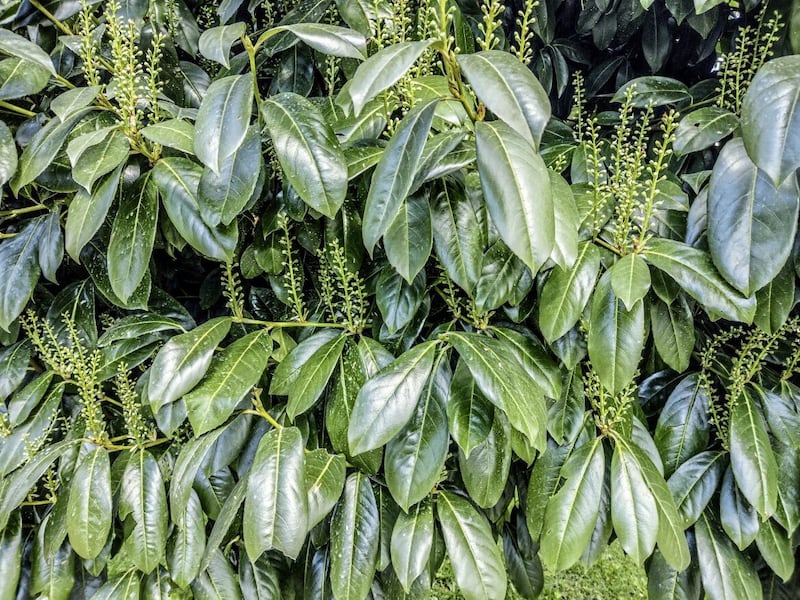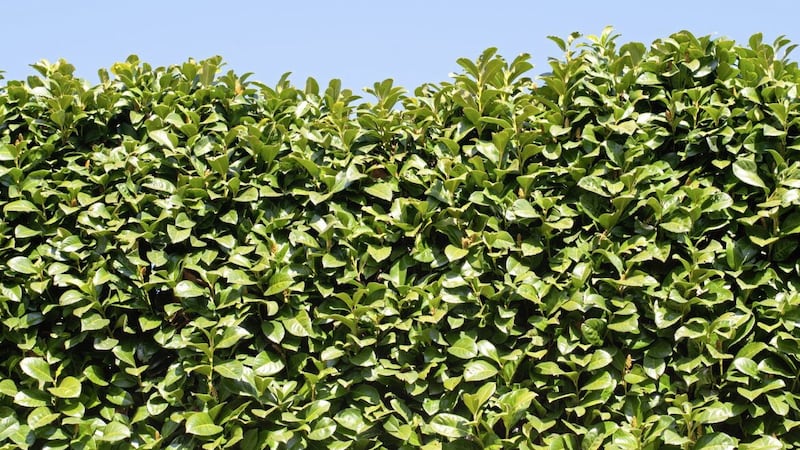PATIENCE is a virtue – especially when it comes to gardening. Growing things takes time – even annuals can take months to come to maturity, while at the other end of the scale it can take decades for a magnolia to flower. But in the era of fast food and same day deliveries we have become accustomed to instant gratification; the long view has given way to impatience and an expectation that our desires will be fulfilled in the here and now.
It's such an attitude that I believe accounts for the recent proliferation of cherry laurel hedges. It's as if every new dwelling in the countryside has the addition of Prunus laurocerasu written into a contract. Where once leylandii was the plant of choice when it came to plugging gaps in a relative hurry, the waxy-leaved blandness of cherry laurel now prevails.
Its key selling point, along with its comparative cheapness, is that it forms a thick, fast growing evergreen hedge, putting on around 30-60cm in height each year. It produces unspectacular white, sweet scented flowers in the spring and red berries throughout the winter. It can withstand shade but doesn't like salty winds or alkaline soils.
You may therefore ask what the problem is with cherry laurel.
Unfortunately, alongside Rhododendron ponticum, cherry laurel is one of Ireland's most invasive plants. This south-west Asian native, like so many plants that now populate our landscape, was imported in the 18th and 19th centuries at the behest of aristocrats and landowners who wanted to bring a bit of exoticism to their expansive gardens. It was also used, like rhododendron, as a so-called understory for game cover.
Cherry Laurel may have been acceptable if they'd have stayed put but over decades they have put down their roots across swathes of rural Ireland, particularly in the more humid west, where they form dense impenetrable thickets.
It can be contained and well-maintained in a garden, but it can spread by seed to predominate native habitats. The leaves contain cyanide, which makes cherry laurel toxic to mammals and many invertebrates, and their inpenetrable canopy ensures nothing grows beneath. Often the light-deprived ground beneath the canopy turns to thick, toxic mud. Its removal from public and private lands is costly, while its ecological impact can't be quantified.

Yet despite us knowing all about the problems Prunus lauroceras causes, you can still buy this plant in garden centres, which effectively ensures its unwelcome colonisation of the Irish landscape continues, along with the attendant destruction of the island's biodiversity. Its crudely analogous to having no restrictions on the sale of tobacco while being familiar with the diseases and costly healthcare related to smoking.
However, it seems the fightback is on. A year ago, a campaign group called for a ban on what it termed the “aggressive invasive species” that threatens biodiversity.
Eoghan Connaughton, founder of the Gaelic Woodland Project, even started a petition to stop the sale of cherry laurel in the Republic.
“We need to stop selling these invasive species in garden centres,” he told the Times. “There’s no warning label or anything – there’s no indication that this is a danger to ecology or ecological inheritance. Some people are just unwittingly, unknowingly, planting these things.”
Naturally, there's some resistance from garden centres and nurseries who sell cherry laurel but at least the debate has begun.








